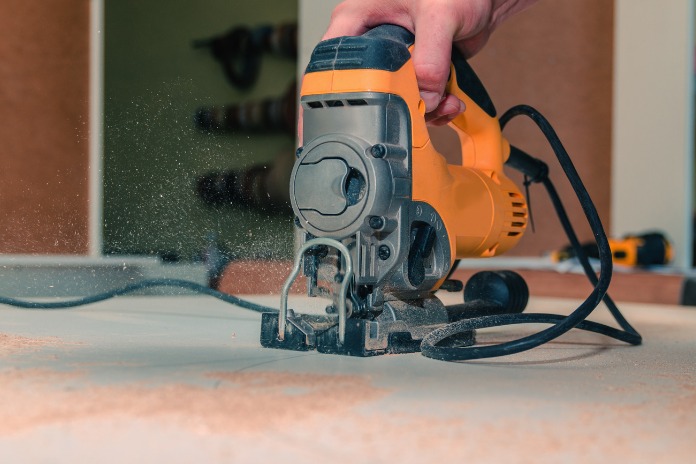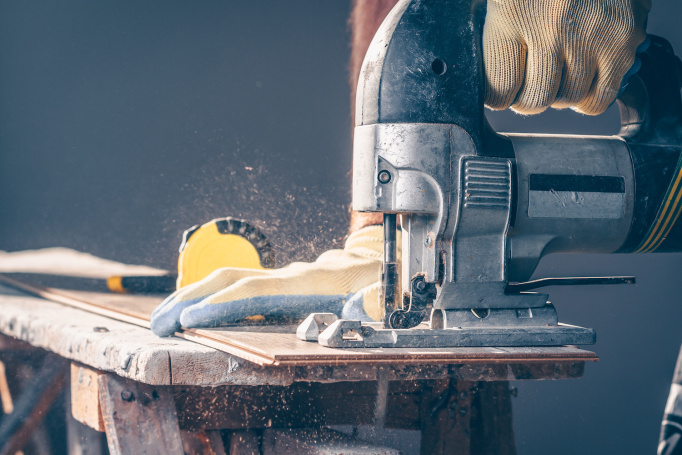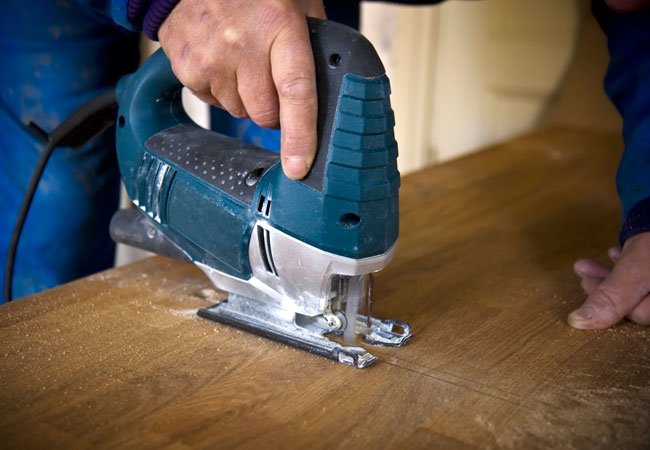Jigsaw ranks among the most favorite tools of carpenters and furniture makers. The credit goes to its ease and versatility of use. Making curved and patterned cuts is at the heart of many furniture-making jobs. In all these instances, you can work with your jigsaw without any second thoughts.
It is convenient to use and easy to handle. One issue that beginner jigsaw users commonly face is splintering when cutting plywood. Today we dedicated this article to tell you how to avoid splintering of the material. Also, some other tips and tricks can help you improve your working with a jigsaw.
Reasons of splintering
Knowing the reasons why something is happening makes it easy to take remediating measures. Similarly, you can solve the issue of splintering if you understand why it happens. There are a variety of reasons for the splintering of the material. For instance, the choice of the wrong number of teeth, and size of the jigsaw blade, etc., contribute to splintering.
Many jigsaw brands such as DeWalt and similar high-quality ones offer variable speed trigger that allows you to adjust the speed. Choosing the wrong speed on your jigsaw is also one reason contributing to the splintering of plywood. Sometimes, you may choose an extra fast speed option in a hurry that does not go well with the material; hence the edges of the material break off.
Choose the right jigsaw blade
It might be surprising to note that choosing the wrong blade for a jigsaw is more common than you might have imagined. The issue is more common among novices and beginner jigsaw users.
A jigsaw blade comes in a range of lengths, widths, and teeth arrangements. Therefore new users may fail at choosing the right blade. The Jigsaw Blades for Plywood is one that makes the perfect cut, whether it is straight or a curved cut. Therefore, over the years, two rules of thumb have helped beginners in making the right choice.
- If you want to make long and straight cuts, choose a wider blade. On the contrary, for curved cuts, a narrower blade is a better and more preferred option.
- If you want to make precise and cleaner cuts, do not go with a blade with fewer and larger teeth. Such a blade is suitable for rough cutting where splinters don’t pose an issue. For clean and splinter-free cutting, go with a blade with a high teeth ratio.
The brands offer all the information related to the teeth’ size, number, and width on the packaging. Make sure to go through it to buy the most appropriate Jigsaw blade for cutting Plywood.
Assess the condition of the blade
You may have the right blade for the plywood with an accurate teeth size and count, but what about sharpness? Cutting with a blunt tooth will likely result in the splintering of the wood. You cannot achieve finesse in your cutting if you ignore the appropriate sharpness.
Therefore, assess the condition of the blade before you start cutting. It is better to replace it with a new one if it is less than perfect, lest you ruin the whole project.
Choose the right jigsaw-blade teeth type
One of the reasons the plywood experiences splinters is the wrong type of teeth. In the market, there are two types of teeth: upward and downward. The downward teeth blade is more prone to causing splinters to the cutting material. Therefore, it is always a better choice to use an upward-teeth blade.
Use clamps to support the plywood
Making curved and straight cuts with a jigsaw is tricky when it comes to supporting the material. The use of a hold-down clamp can help you keep the piece secure when you cut.
A straight guide is a must when making a straight cut in the plywood. It will avoid any chances of the jigsaw wandering off its course. You can use a rip fence or a DIY rip made with plywood or any other similar one.
Choose the right speed
You might be in a hurry and tempted to choose a higher speed for your projects. Know that your haste can cause splintering to the plywood. Therefore, choosing the right speed and how to control it during cutting is another essential tip.
The control is particularly important when making circles or curved cuts. A more than appropriate speed not only harms the machine but the user as well. There is a strong possibility of deviating from the mark, hence ruining the cut.
Use of splinter guard
A splinter guard can help make a cut without tearing off chunks of the material. The splinter guard forces the edge of the plywood down and keeps it in extreme proximity to the blade leading edge. This simple tool can help you achieve efficient cutting without splintering with a jigsaw.
Use of masking take
Masking tape is another simple material that helps you cut through the plywood without splintering. The use of masking tape on both sides of the material along the marking is an excellent strategy to control wicker. Masking tape is also easy to take off after cutting.
Engraving the plywood surface
If you do not possess a splinter guard or masking tape, another way to avoid splintering is carving the surface along the marking. You can use a knife or any carving tool to do it. The carving will give you a clear line to follow and reduce splintering
Conclusion
A jigsaw is a highly versatile tool, and its compatibility with various blades further enhances its cutting ability and performance. DIYers and carpenters love this tool for the same reasons. Its convenience of use and reliable performance make it an easy pick for woodworkers.
However, certain tips and techniques can enhance your performance and also reduce the splintering of the surface. s
These tips and tricks can help you be in control of your cutting, avoid splintering, and tear off along the edges of the plywood surface.




















